Find VAB

A
10 V
B
20 V
C
30 V
D
None of these
Video Solution
Text Solution
The correct Answer is:A
D is in FB
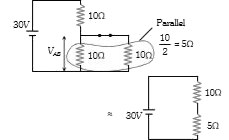
V5=510+5×30=10Volt
|
Updated on:21/07/2023
Topper's Solved these Questions
- BOOK - ERRORLESSCHAPTER - ELECTRONICSEXERCISE - NCERT Based Questions (Junction Transistor)29videos
ELECTRONICS
- BOOK - ERRORLESSCHAPTER - ELECTRONICSEXERCISE - NCERT Based Questions (Digital Electronics)23videos
ELECTRONICS
- BOOK - ERRORLESSCHAPTER - ELECTRONICSEXERCISE - Assertion & Reason26videos
ELECTRONICS
- BOOK - ERRORLESSCHAPTER - ELECTRON, PHOTON, PHOTOELECTRIC EFFECT & X -RAYEXERCISE - ASSERTION & REASON27videos
ELECTRON, PHOTON, PHOTOELECTRIC EFFECT & X -RAY
- BOOK - ERRORLESSCHAPTER - ELECTROSTATICSEXERCISE - ASSERTION & REASON25videos
ELECTROSTATICS
Similar Questions
Knowledge Check
- Question 1 - Select One
Find VA−VB in steady state
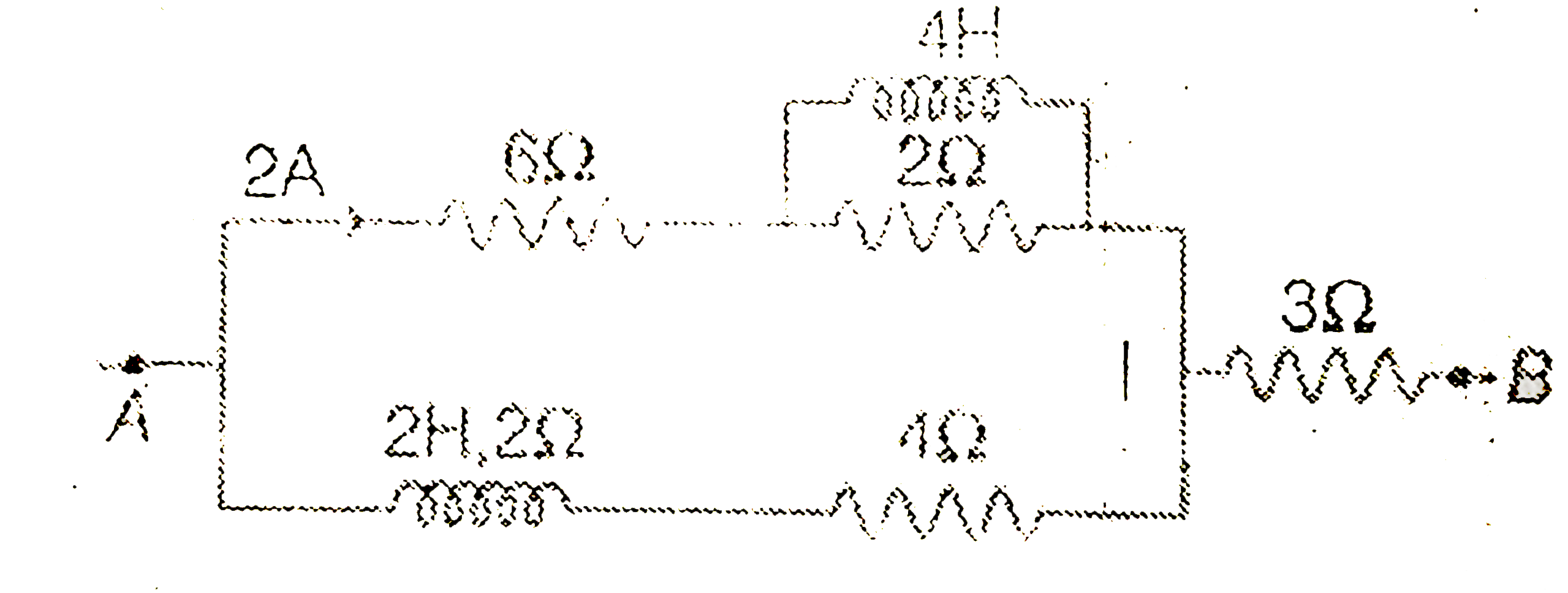 A8VB16VC24VDnone of the above
A8VB16VC24VDnone of the above - Question 2 - Select One
If VAB=4V in the given fig are, then resistance χ will be
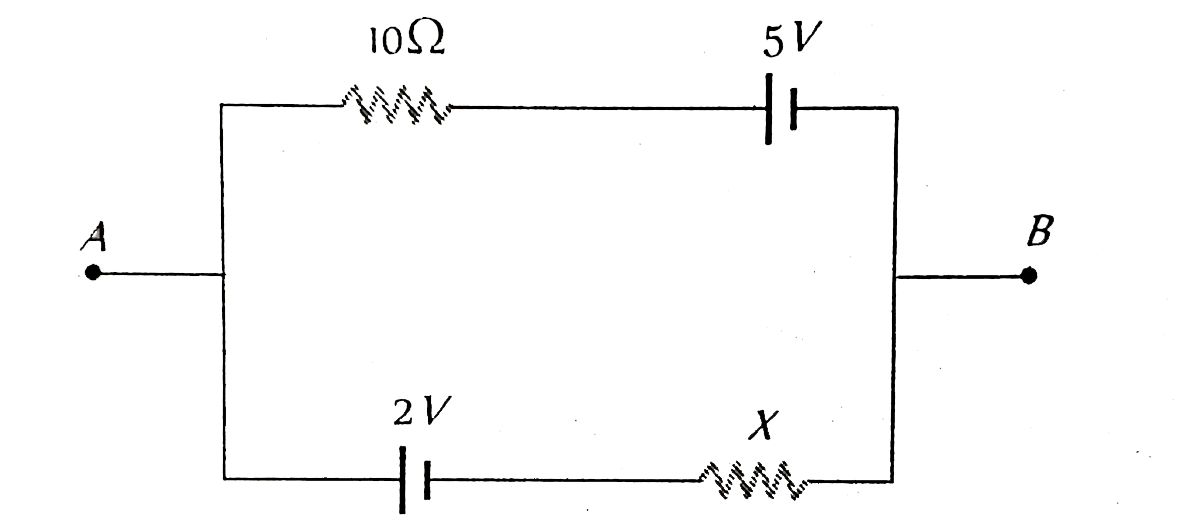 A5ΩB10ΩC15ΩD20Ω
A5ΩB10ΩC15ΩD20Ω - Question 3 - Select One
Find the RAB in the given network.
 A5 ohmsB10 ohmsC2 ohmD2/3 ohm
A5 ohmsB10 ohmsC2 ohmD2/3 ohm
In the following circuit if VAB=4V, then the value of resistance X in ohm's will be:-
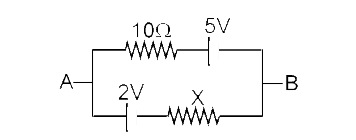 View Solution
View SolutionIn the above problem if given graph is between VAB and time. Then plot graph between VED and time.
View SolutionFind the Vab in an electric field E=(2ˆi+3ˆj+4ˆk)NC, where ra=(ˆi−2ˆj+ˆk)m and rb=(2ˆi+ˆj−2ˆk)m
View SolutionIn the circuit as shown, VA−VB=V. The resistance of each wire AB, AC, etc are shown in the figure. Find the current in AC.
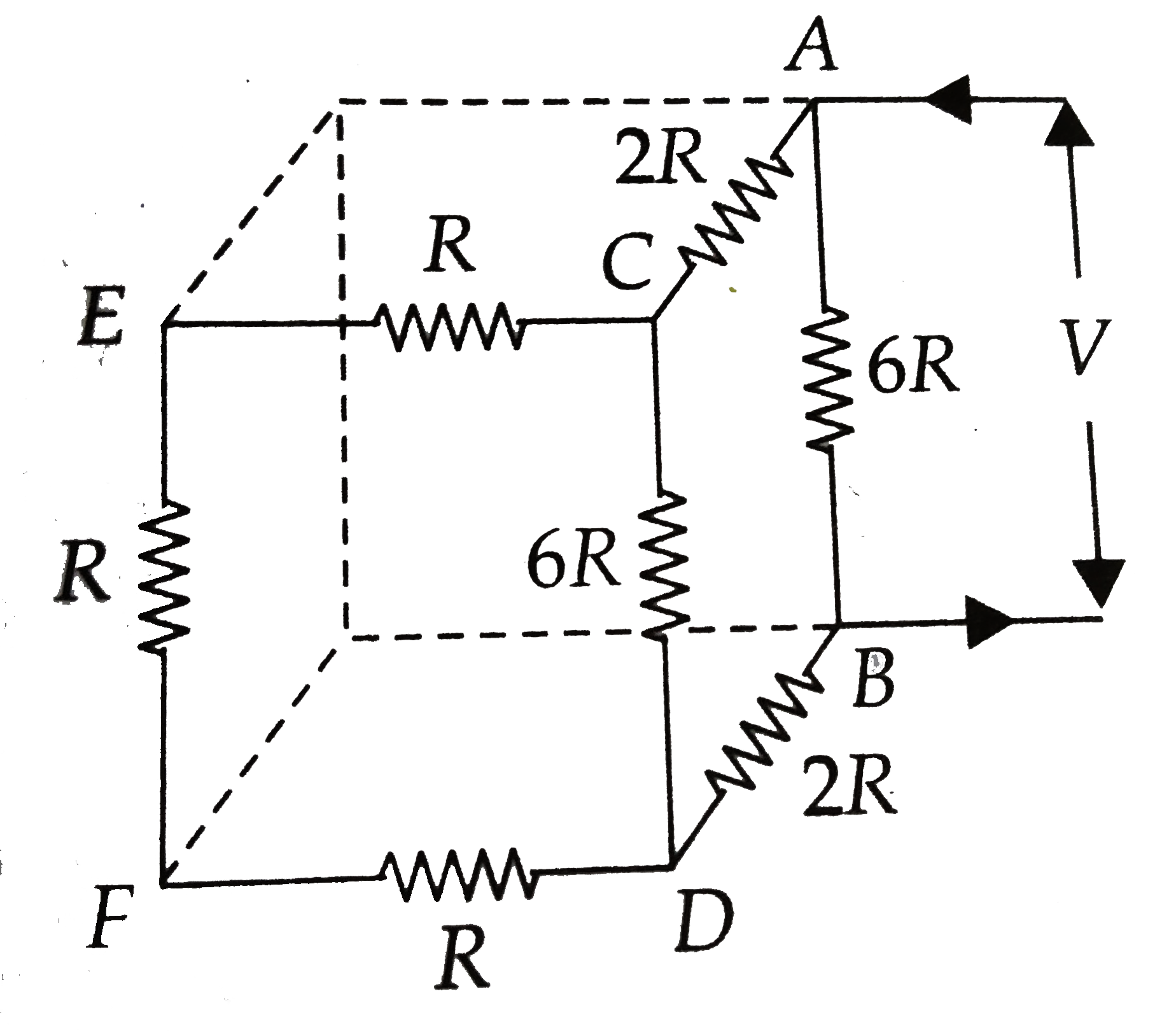 View Solution
View SolutionFind VP−VQ in the circuit shown in figure.
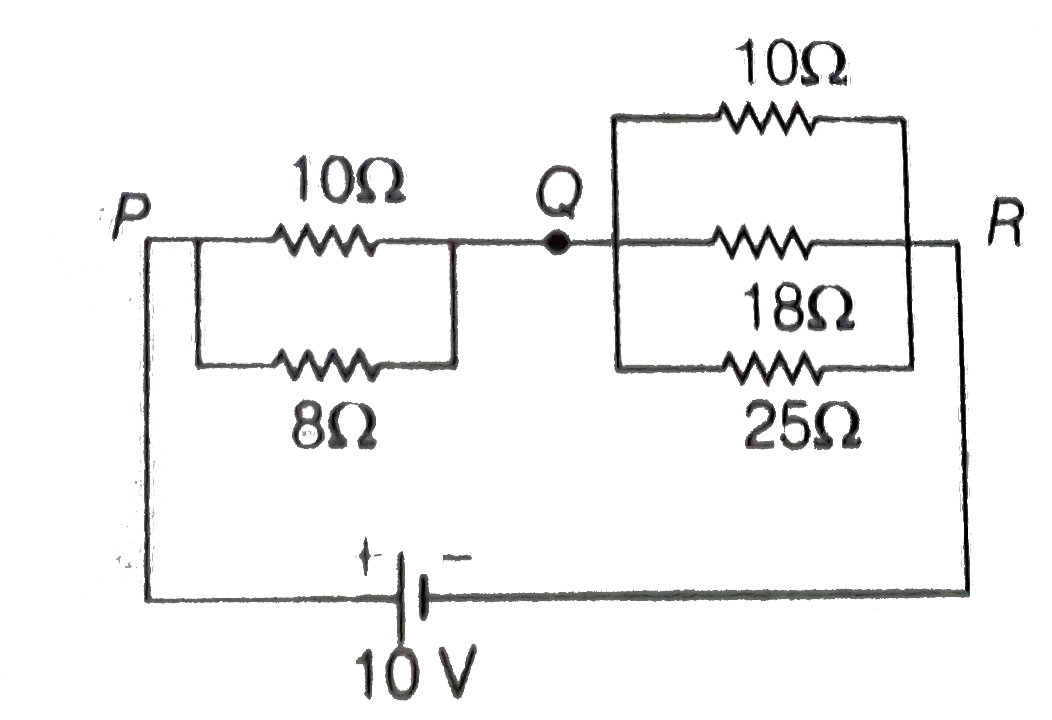 View Solution
View Solution



